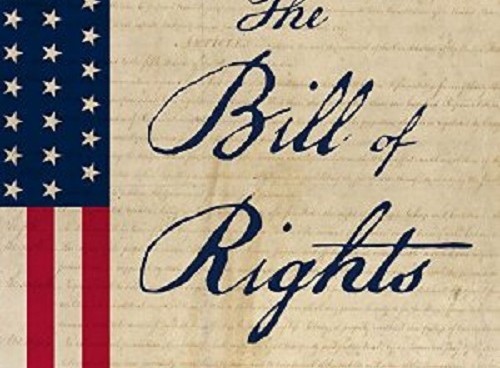How the Bill of Rights Became Law

“The Bill of Rights: The Fight to Secure America’s Liberties” by Carol Berkin, Simon & Schuster, 2015
If you read only one book about the first ten amendments to the U.S. Constitution, known collectively as the Bill of Rights, read Carol Berkin’s The Bill of Rights: The Fight to Secure America’s Liberties. In just 271 pages, Berkin tells the story of how James Madison made it his personal crusade to satisfy the promises made during the ratification debates to amend the Constitution to include a bill of rights.
The Bill of Rights were compiled by James Madison from a long list of about five dozen amendments proposed by the states during the ratification debates that took place in the States after the Constitution was signed on September 17, 1787, until it was finally ratified by the states on December 15, 1791.
Within the first two months that the first congress was convened Madison kept his campaign pledge to his constituents from Virginia and proposed amending the Constitution to include a Bill of Rights. His compilation of rights included twenty (20) amendments that were later consolidated in the House of Representatives to seventeen (17) amendments. Most of the amendments Madison selected were based on the Virginia Declaration of Rights drafted by James Mason for Virginia in 1776 to protect individual liberties and limit the power of the federal government.
After six months of James Madison’s dogged insistence to amend the Constitution, the House, and the Senate agreed, by a joint resolution on September 25, 1789, that twelve (12) amendments would be sent to the states for ratification. Ultimately only ten (10) amendments were ratified by the states. Freedom of Speech became the First Amendment after they were renumbered.
While most Americans are familiar with the First Amendment’s freedom of speech or the Fourth Amendment’s protections against unreasonable searches and seizures, far fewer, appreciate the struggle that they have undergone to become the Constitutional bedrocks they are today. The Bill of Rights: The Fight to Secure America’s Liberties provides their early backstory in a highly readable and at times even captivating book.
Berkin’s book tells the story of how James Madison moved from his position in September 1787 that a Bill of Rights was unnecessary to his new position as the lead advocate for a Bill of Rights at the Virginia ratifying convention and at the first congress in April 1789. Her book reveals the story of political intrigue and deal-making that could be written about any piece of modern legislation in the backrooms of the halls of Congress today.
Berkin details the political strategy in 1789 to quell the opposition to the Constitution and prevent the anti-federalist members of Congress from calling a second constitutional convention to change more central issues like the federal government’s power to tax and the power to regulate commerce. What we think of today as a statement of the high minded idealism of the founding fathers was for many members of the first Congress, pure politics.
The country’s earliest days were marked by a power struggle over the authority of the federal government versus the power of the states. Berkin writes: “This confrontation between states’ rights and national authority started with the fierce debates over ratification of the Constitution, and it continued in the First Federal Congress, in the state legislatures, and in the press as Washington’s first administration began.”
Perhaps for Madison, at least, it wasn’t all politics. While Madison certainly saw the political necessity of amending the constitution, he viewed the Bill of Rights as potentially unifying. He also wanted to set high standards for the relationship between the government and its citizens. According to Berkin:
The addition of these amendments was thus a patriotic as well as a political measure, for it was designed to strengthen republican values and to ensure that the American government would honor the people’s right to life, liberty, and the pursuit of happiness. It was the genius of James Madison that he could unite practical considerations and noble aspirations, and join the ideological with the ideal.
The Bill of Rights: The Fight to Secure America’s Liberties is available on Amazon.com, as well as Audible.com.
